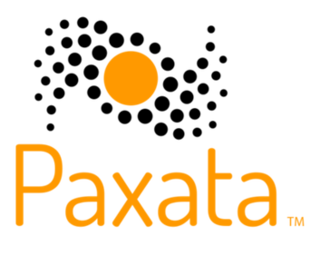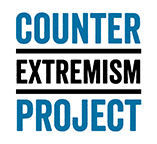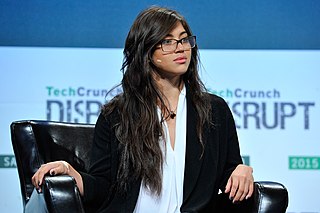Related Research Articles

Social network analysis (SNA) is the process of investigating social structures through the use of networks and graph theory. It characterizes networked structures in terms of nodes and the ties, edges, or links that connect them. Examples of social structures commonly visualized through social network analysis include social media networks, memes spread, information circulation, friendship and acquaintance networks, business networks, knowledge networks, difficult working relationships, social networks, collaboration graphs, kinship, disease transmission, and sexual relationships. These networks are often visualized through sociograms in which nodes are represented as points and ties are represented as lines. These visualizations provide a means of qualitatively assessing networks by varying the visual representation of their nodes and edges to reflect attributes of interest.
Logic Programming Associates (LPA) is a company specializing in logic programming and artificial intelligence software. LPA was founded in 1980 and is widely known for its range of Prolog compilers and more recently for VisiRule.
The Information and Communications Laboratory (ICL) is one of eight labs in the Georgia Tech Research Institute. Along with the GTRI Cyber Technology and Information Security Laboratory, it is part of the Information and Cyber Sciences directorate. It conducts a broad range of research in areas of computer science, information technology, communications, networking, and the development of commercial products from university research.
Social network analysis software is software which facilitates quantitative or qualitative analysis of social networks, by describing features of a network either through numerical or visual representation.
Jacob Ezra Merkin is an American investor, hedge fund manager and philanthropist. He had been a fund manager and capital raiser until 2008 when one of the funds in Gabriel Capital LP, his $5 billion group of hedge funds became insolvent because a large portion of its assets was invested with the convicted Ponzi scheme operator Bernard Madoff. The fallout from his investment with Madoff has been extensive. He navigated a series of lawsuits without a finding of fraud or knowledge of the scheme, but agreed to repay any fees earned from the investment in Madoff historically. He had to resign a series of positions including his role as Non-executive Chairman of GMAC.
H. David Kotz, also known as Harold David Kotz, is a managing director at Berkeley Research Group.
Avaya Unified Communications Management in computer networking is the name of a collection of GUI software programs from Avaya utilizing a service-oriented architecture (SOA) that serves as a foundation for unifying configuration and monitoring of Avaya Unified Communications Servers and data systems.
Computational journalism can be defined as the application of computation to the activities of journalism such as information gathering, organization, sensemaking, communication and dissemination of news information, while upholding values of journalism such as accuracy and verifiability. The field draws on technical aspects of computer science including artificial intelligence, content analysis, visualization, personalization and recommender systems as well as aspects of social computing and information science.

Hsinchun Chen is the Regents' Professor and Thomas R. Brown Chair of Management and Technology at the University of Arizona and the Director and founder of the Artificial Intelligence Lab. He also served as lead program director of the Smart and Connected Health program at the National Science Foundation from 2014 to 2015. He received a B.S. degree from National Chiao Tung University in Taiwan, an MBA from SUNY Buffalo and an M.S. and Ph.D. in Information Systems from New York University.
The Cyberinfrastructure for Network Science (CNS) Center was founded in October 2005 by Professor Katy Börner at Indiana University, Bloomington. It emerged from the Information Visualization Lab at IU that focused on the analysis and visualization of data since 1999. With the advent of CNS, the mission was broadened from providing a research lab to building an entity that would advance datasets, tools, and services for the study of biomedical, social and behavioral science, physics, and other networks. A specific focus of CNS is research on the structure and evolution of science and technology (S&T) and the communication of results via science maps.
In network theory, link analysis is a data-analysis technique used to evaluate relationships (connections) between nodes. Relationships may be identified among various types of nodes (objects), including organizations, people and transactions. Link analysis has been used for investigation of criminal activity, computer security analysis, search engine optimization, market research, medical research, and art.
Fitocracy is an online game and social network that aims to use gamification to help users improve their fitness. It has received coverage from mainstream media sources.

We Heart It is an image-based social network. We Heart It describes itself as "A home for your inspiration" and a place to "Organize and share the things you love." Users can collect their favorite images to share with friends and organize into collections. Users can access the site through a web browser or We Heart It's iOS and Android mobile apps.

NodeXL is a network analysis and visualization software package for Microsoft Excel 2007/2010/2013/2016. The free version contains network visualization and social network analysis features. The commercial version includes access to social media network data importers, advanced network metrics, and automation. It is a popular package similar to other network visualization tools such as Pajek, UCINet, and Gephi.

Bottlenose.com, also known as Bottlenose, is an enterprise trend intelligence company that analyzes big data and business data to detect trends for brands. It helps Fortune 500 enterprises discover and track emerging trends that affect their brands. The company uses natural language processing, sentiment analysis, statistical algorithms, data mining and machine learning heuristics to determine trends, and has a search engine that gathers information from social networks. KPMG Capital has invested a "substantial amount" in the company.

Filippo Menczer is an American and Italian professor of informatics and computer science who is the former director at the Center for Complex Networks and Systems Research, a research unit of the Indiana University School of Informatics, Computing, and Engineering. He holds courtesy appointments in Cognitive Science and Physics, is a founding member and advisory council member of the IU Network Science Institute, a senior research fellow of the Kinsey Institute, and a fellow of the Center for Computer-Mediated Communication, and a former fellow of the Institute for Scientific Interchange in Turin, Italy. In 2013 he was named a Distinguished Scientist of the ACM.

Paxata is a privately owned software company headquartered in Redwood City, California. It develops self-service data preparation software that gets data ready for data analytics software. Paxata's software is intended for business analysts, as opposed to technical staff. It is used to combine data from different sources, then check it for data quality issues, such as duplicates and outliers. Algorithms and machine learning automate certain aspects of data preparation and users work with the software through a user-interface similar to Excel spreadsheets.
Videre est Credere (Videre) is a human rights organization that equips oppressed communities in hard-to-access areas with cameras, technology, and training to safely and effectively collect video evidence to expose violence, human rights violations, and other systemic abuses. The organization's name means "to see is to believe" in Latin. It is registered as a charitable organization in London, England. Videre has trained over 500 activists since its founding in 2008.

The Counter Extremism Project (CEP) is a nonprofit non-governmental organization that combats extremist groups "by pressuring financial support networks, countering the narrative of extremists and their online recruitment, and advocating for strong laws, policies and regulations."

Isis Anchalee is a Canadian full-stack engineer.
References
- 1 2 Fermoso, Jose (22 Oct 2008). "What Facebook and Steroid Use Have in Common". Wired.com. Retrieved 25 January 2013.CS1 maint: discouraged parameter (link)
- ↑ Pacella, Rena Marie (1 Aug 2006). "Tied To a Terrorist". Popular Science. Retrieved 12 June 2013.CS1 maint: discouraged parameter (link)
- ↑ Schachtman, Noah (1 Aug 2006). "Big Brother 101". Popular Science. Retrieved 12 June 2013.CS1 maint: discouraged parameter (link)
- ↑ Axe, David. "NSA Sweep "Waste of Time," Analyst Says". DefenseTech. Military.com. Retrieved 12 June 2013.CS1 maint: discouraged parameter (link)
- ↑ Weinberger, Sharon. "Case Study: Connecting the 9/11 Hijackers". War 2.0. Medill National Security Journalism Initiative. Retrieved 25 January 2013.CS1 maint: discouraged parameter (link)
- ↑ Keefe, Patrick Radden (March 12, 2006). "Can Network Theory Thwart Terrorists?". New York Times. Retrieved 24 January 2013.CS1 maint: discouraged parameter (link)
- ↑ Eakin, Emily (March 13, 2004). "Study Finds a Nation of Polarized Readers". New York Times. Retrieved 24 January 2013.CS1 maint: discouraged parameter (link)
- ↑ Sifry, Micah L. "2012 Political Book Buyers Less Polarized Than in 2008". TechPresident. Personal Democracy Media. Retrieved 25 January 2013.CS1 maint: discouraged parameter (link)
- ↑ Miemis, Venessa (2011-05-25). "Facebook: The Social Accelerator?". Forbes. Retrieved 24 January 2013.CS1 maint: discouraged parameter (link)
- ↑ Zolli, Andrew; Healy, Ann Marie. Resilience : why things bounce back . New York: Free Press. ISBN 1451683804.
- 1 2 Grzegorek, Vince (Jan 18, 2012). "Local Researcher Proves Dimora Was a Hack by Mapping County Corruption". Scene Magazine. Retrieved 24 January 2013.CS1 maint: discouraged parameter (link)
- ↑ Murphy, Tom (2012-02-16). "Investigating Relationships with Social Network Analysis". Technology Voice. Retrieved 24 January 2013.CS1 maint: discouraged parameter (link)
- ↑ Walters, Helen (February 16, 2009). "The Tangled Web of Bernard Madoff's Network". Bloomberg Businessweek. Retrieved 24 January 2013.CS1 maint: discouraged parameter (link)